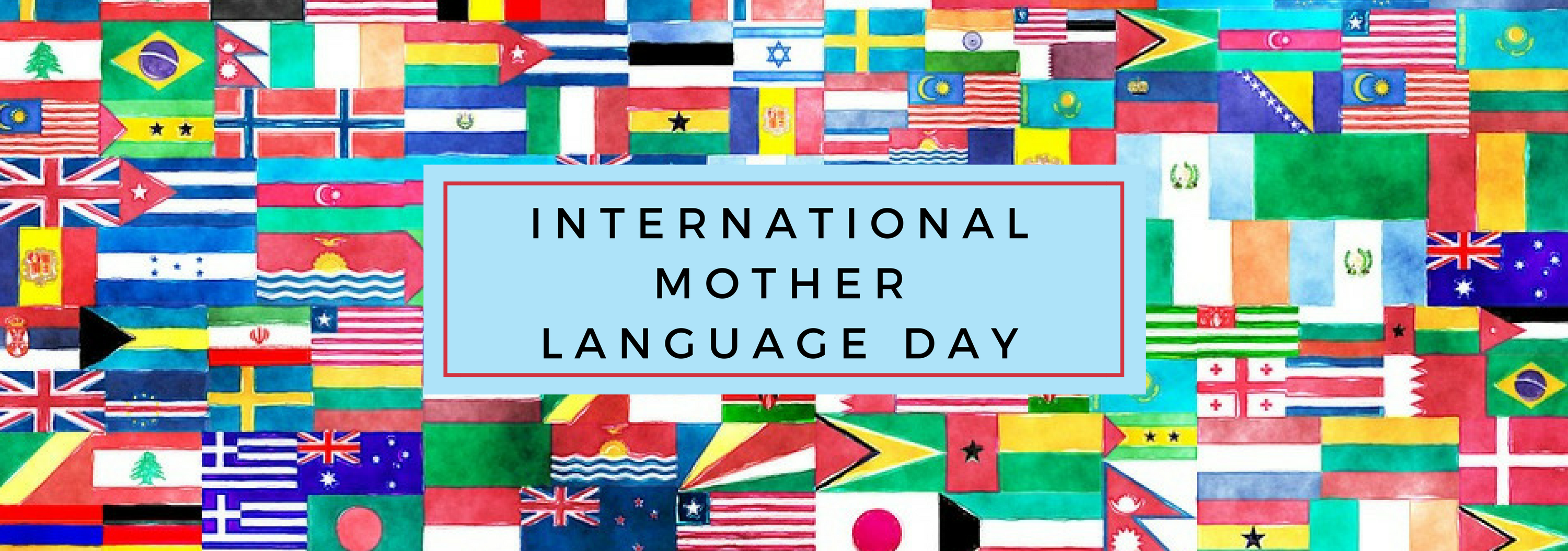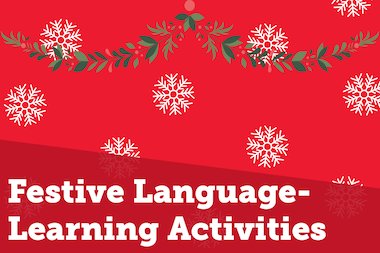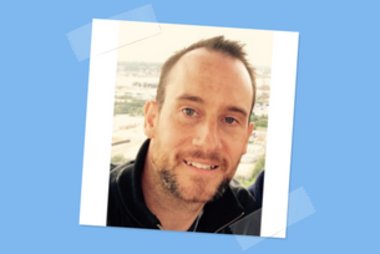Teaching Your Native Language

Teaching your first language as a second language
International Mother Language Day is a day to celebrate diversity and languages as well as the efforts people go to in order to learn additional languages. You can find out more about this incredible event on the UN website.
When it comes to teaching languages, there are special challenges and complexities that come with trying to teach your first language to someone who is learning it as an additional language. These challenges differ to those that face people who have learned a language and then teach it to others (though they of course have their own unique difficulties).
Every Mary Glasgow Magazine is edited by a native speaker of the language and our office is full of former language teachers. We got some of them together to form a discussion around teaching your mother tongue. You can read our full interview here.
First, let’s introduce them:
Fiona is one of our Modern Foreign Language editors. Her primary magazine is Bonjour and her first language is French.
Katy edits our English magazines. She’s from New Zealand and has a history teaching English as a foreign language.
Maje is our Spanish editor. You might recognise her from our Hola from the Editor section of Ahora and ¿Qué tal?

Fiona: I think the answer to this question will depend on the learner’s native language. From my experience, English speakers tend to struggle with grammatical agreements, genders and tenses the most, but this varies.
Katy: Variation in accents is always a challenge. Being from New Zealand, learners are often not used to our accent and unique slang! It’s easily controlled in the classroom, but in NZ I would often spend the first 10 minutes of a lesson answering students questions about strange sentences they heard on the street…
Maje: It depends on the learner and their mother language, but most of my students struggled with grammar (especially tenses – ser and estar, subjunctive and so on –; and gender/number agreement) and pronunciation of certain sounds. Students also found challenging the variation of Spanish, false friends and cultural differences that affect the language and communication. Also, non-verbal communication can be a challenge for students from certain nationalities.

Fiona: I like incorporating cultural facts into a lesson. It could be everyday life, literature, history or geography… I like to take a step back and show the bigger picture. This is why the MGM magazines can bring a nice touch to a classroom – they are a window into a different culture and a great complement to a more theoretical lesson.
Katy: At the lower levels, often it’s quite fun roleplaying everyday language, as students can see the immediate benefit. I once did a functional language class based on signing up to a fitness centre, and the next week a student went into the local gym and completed the application by herself! At the higher levels, it’s fascinating looking at idiomatic language because it often doesn’t translate, and students really enjoy sharing their own idioms and translations in English.
Maje: Grammar, but also culture and non-verbal communication.

Fiona: I wouldn’t actually want to change anything, but I have to admit that the spelling is difficult and the absence of logic involved means that you need to memorise a lot of things. But isn’t repetition the essence of pedagogy? (This could be the motto of any French class!)
Katy: I would do away with irregular verbs! Why do they exist!? I would also fight nail and tooth to make spelling more consistent.
Maje: I wouldn’t change a thing!

Fiona: In theory, teaching your own language seems easy, but in practice, it can be incredibly challenging. It forces you to look at your language from a completely different perspective and almost learn everything again before you can teach it well. In this respect, I think that non-Native speakers are at an advantage when it comes to teaching a second language. They will know every rule and the reason for them (when there is one – spoiler: a lot of rules exist for no reason in French), whereas a native speaker might apply a rule because they memorised it but wouldn’t always be able to explain why it exists.
Katy: Learning to grade or simplify your own language is something every teacher struggles with. If you’re a native speaker, chances are you’ve spent your whole life trying to improve and boost your vocabulary. This is especially true in English, where often, the more words we cram into a sentence, the more polite and less direct it becomes. For example, “would you possibly mind passing me the salt” vs “pass the salt”. It takes a while to get your head around the idea that simple effective communication is what a learner needs!
Maje: I think that any teacher (even a native speaker) should have formal training. Being a native speaker doesn’t mean that you know how to teach your language, especially as a second language. You need to acquire the tools to effectively teach the language.

Fiona: Understanding grammar basics. Teaching grammatical concepts that don’t exist in your students’ native languages can be very challenging. I have tried to teach French grammar rules to native English speakers who had no idea how to deconstruct a sentence (even in their own language) in terms of subject, verb, direct or indirect object, adjective, adverb, etc. This knowledge is almost superfluous to them because English grammar is more straightforward, but it is essential if they want to learn another language.
Katy: Pronunciation was something that baffled me at the beginning of my teaching career. I was confused about why some students struggled to repeat or make the sounds that I was: “no, it’s PUB-LIC not POOBLIC!” Then I took a course on phonics. After learning about tongue mechanics and understanding the different ways in which our mouths form as infants depending on what sounds we are exposed to, I felt much more understanding towards my students, and much less confident about my prospects of mastering Mandarin…
Maje: The lack of knowledge of grammar in the UK surprised me when I started teaching in this country. It changed the way I presented grammar to British students.

Fiona: Other than the need to shift your perspective (which I touched upon earlier), I think one of the biggest challenges is to make the lesson relevant to the student’s personal objectives. If the objective is to pass an exam, unfortunately, topics and language points will be restricted to the curriculum and I personally struggle with the limitations this comes with. This is why I would always encourage students to go beyond, in their free time, and explore a little bit more of each subject – not just languages!
Katy: Something that a lot of new teachers find hard, is giving useful and meaningful corrective feedback. It is very easy as a native speaker to just say “that’s wrong”, however knowing how to explain why the error is wrong, and even knowing when is a useful time to point out the error is something that comes with experience and training. I also assumed that because I had an ‘excellent command’ of English, that I would know all the answers. It’s quite humbling when you enter your first week of teaching and a student asks you to explain the difference between the ‘present perfect’ and ‘present perfect continuous’ and you realise that is something you’ve never thought about before in your life. I was later humbled again when presented with the opportunity to sit the IELTS test, and only received a band score 8 instead of the 9 (expert user score!) It reminds you of how difficult it is to learn a new language!
Maje: To change the way I understand grammar and speech as firstly I read Spanish Philology at university, the study of language in oral and written historical sources, a combination of literary criticism, history, and linguistics. When I trained as a teacher of Spanish as a second language I had to understand grammar, morphology, phonics, culture, etc., from a student’s point of view and do more research into applied linguistics.
Mary Glasgow Magazines offer a unique way for students to learn languages. Every subscription includes five magazine issues per year which are carefully tailored to match the curriculum and feature up-to-date and relevant content. Packed full of cultural insight, Mary Glasgow Magazines cover a range of topics that students want to read about with everything from YouTubers to sports stars featured.
To find out more about Mary Glasgow Magazines, visit maryglasgowplus.com.
Similar Posts
-

Festive Language-Learning Activities
Do you teach English, French, German or Spanish? Check out these Christmassy downloads to bring the festive spirit to your classroom!
-

Our top 5 ELT resources for keeping students engaged this summer
The summer holidays are on the horizon, but keeping students engaged with their English language learning will ensure they’re ready for the next year to begin. To keep up the momentum over the next few months, we’re…
-

Aspects of English which ELT students find particularly difficult
English Language Teacher Martin Wilson discusses some of the trickier parts of learning English.
